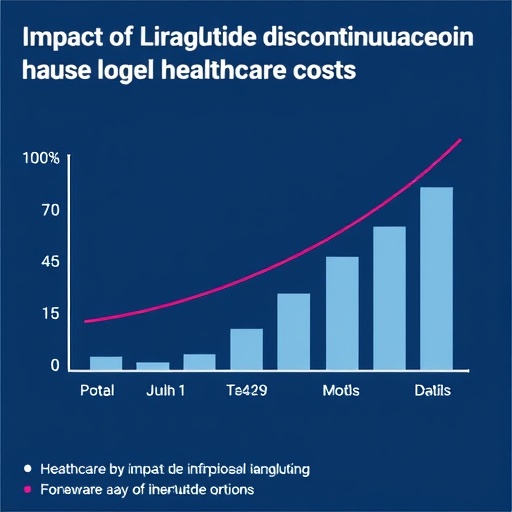
In the realm of drug discovery, the quest for innovative therapeutics often necessitates the convergence of multiple disciplines and advanced methodologies. Recent work led by Zhao et al. presents a groundbreaking integrated approach for screening novel inhibitors of Protein Tyrosine Phosphatase 1B (PTP1B), a pivotal target in the treatment of various metabolic diseases and conditions like obesity and diabetes. The study stands out not only for its intermingling of machine learning (ML) with traditional computational chemistry techniques but also for its commitment to enhancing efficiency and precision in the drug discovery process.
The research begins by addressing the significant role that PTP1B plays in insulin signaling pathways—a function crucial for maintaining glucose homeostasis. Dysregulation of PTP1B has been implicated in insulin resistance, making it a prime target for therapeutic intervention. However, the complexity of PTP1B interactions within the cellular environment poses a formidable challenge for researchers aiming to develop effective inhibitors. The authors propose a multifaceted approach that holistically integrates machine learning algorithms, molecular docking, and molecular dynamics simulations, thereby streamlining the identification of potential PTP1B inhibitors from a vast chemical space.
Machine learning, as employed by Zhao et al., serves as an algorithmic backbone, adept at discerning patterns in biological data and predicting molecular interactions. The authors utilized existing datasets to train their ML models, enabling the formulation of robust predictive algorithms that could prioritize chemical compounds for further evaluation. This step is critical; it allows researchers to sift through millions of compounds and focus their efforts on those most likely to demonstrate favorable binding affinities and biological activity against the PTP1B target.
Molecular docking complements the ML predictions by providing a detailed interaction profile between selected compounds and the PTP1B enzyme. This computational technique simulates the binding process, enabling researchers to visualize and assess how well potential inhibitors fit within the enzyme’s active site. The authors emphasize that docking studies not only elucidate favorable interactions but also help identify structural features imperative for binding, thereby guiding modifications in chemical structure for enhanced efficacy.
However, molecular docking is merely one piece of a larger puzzle. Zhao et al. advance to include molecular dynamics simulations as an essential component of their methodology. These simulations replicate the dynamic behavior of the protein-inhibitor complexes over time, yielding insights into their stability and the nature of binding interactions under physiological conditions. Such simulations provide a more nuanced understanding of the molecular interactions and can highlight potential pitfalls in the binding that might not be visible through docking alone.
The authors detail their results from applying this integrated framework, noting how it allowed for the identification of several promising candidates that displayed significant inhibitory activity against PTP1B. By employing their multistep approach, Zhao et al. could narrow down a large pool of candidates to just a few molecules worthy of experimental validation. This efficiency not only saves time but also reduces the overall cost associated with drug development, which is often a significant barrier in the pharmaceutical sciences.
Moreover, the implications of their findings extend beyond PTP1B; they highlight the versatility of their integrated methodology, suggesting that it could be adapted for other targets in drug discovery. The potential for this approach to revolutionize how researchers identify and test small-molecule inhibitors is immense, paving the way for rapid advancements in other therapeutic areas.
As the global health community grapples with a rising tide of metabolic disorders, the solutions presented by Zhao et al. could not come at a more crucial time. With diabetes rates soaring and obesity becoming an epidemic, finding effective treatments is imperative. The integrated method not only facilitates the discovery of new inhibitors but also enhances the understanding of PTP1B’s role and its intricate biological interactions, an understanding foundational to the next generation of therapeutics.
In a broader context, this study exemplifies the transformative potential of computational and artificial intelligence technologies in biomedical research. By marrying traditional scientific methods with cutting-edge computational approaches, researchers can unlock new avenues in drug design that were previously inaccessible. This fusion of technology and biology not only accelerates drug discovery timelines but also fosters a more profound comprehension of the biological systems at play.
The research community is increasingly recognizing the critical need for innovation in the face of complex health challenges. The approach taken by Zhao et al. can serve as a template for future studies, encouraging interdisciplinary collaborations that harness the strengths of various scientific fields. This could catalyze a new era in drug discovery, where machine learning is not merely a supplementary tool but a core element of the research strategy.
Judiciously, Zhao et al. conclude their study by advocating for continued development and refinement of their integrated framework. They emphasize that the intersection of machine learning and molecular modeling holds untapped potential for accelerating drug discovery and optimizing lead candidates. This foresight is essential, as it not only drives scientific inquiry forward but also inspires confidence that the future of therapeutic development is bright, underpinned by innovation and technological advancement.
As the landscape of pharmaceutical research continues to evolve, studies like this are vital. They highlight not just the exciting possibilities for new treatments but also the importance of embracing a multidisciplinary approach in tackling some of the most pressing health issues of our time. The collaborative spirit highlighted in Zhao et al.’s studies serves as a beacon for researchers worldwide, striving to transform innovative ideas into tangible health solutions.
The implications of this research for the broader scientific and medical communities are profound. As the field of drug discovery faces mounting pressure to deliver novel therapies quickly and efficiently, integrated methodologies that encompass machine learning, docking, and dynamics simulations will likely become the standard rather than the exception. This evolution has the potential to facilitate rapid advancements in understanding complex diseases and developing targeted treatments that significantly improve patient outcomes.
As we contemplate the future of drug discovery, it is essential to recognize the value of such comprehensive frameworks. The work conducted by Zhao and colleagues offers a clear pathway for not only developing PTP1B inhibitors but also inspires a new framework for approaching various biomedical challenges. This innovative perspective could ultimately lead to breakthroughs in the fight against diseases that threaten global health, reinforcing the notion that through collaboration and integration, the greatest scientific achievements are possible.
The journey from basic research to clinical application is fraught with challenges, but Zhao et al.’s approach provides a renewed sense of optimism for the future. The ability to leverage the strengths of diverse scientific techniques heralds a new dawn in drug discovery, suggesting that the quest for small-molecule inhibitors will be more fruitful and efficient in the years to come. As the convergence of machine learning and traditional methodologies continues to unfold, the promise of novel therapeutics stands on the horizon, ready to revolutionize medicines and improve the lives of countless individuals around the world.
Subject of Research: Novel PTP1B inhibitors screening using an integrated approach combining machine learning models, molecular docking, and molecular dynamics simulations.
Article Title: An integrated approach for novel PTP1B inhibitor screening: combining machine learning models, molecular docking, molecular and dynamics simulations
Article References:
Zhao, Y., Chen, Y., Tao, X. et al. An integrated approach for novel PTP1B inhibitor screening: combining machine learning models, molecular docking, molecular and dynamics simulations.
Mol Divers (2025). https://doi.org/10.1007/s11030-025-11292-6
Image Credits: AI Generated
DOI: 10.1007/s11030-025-11292-6
Keywords: PTP1B inhibitors, machine learning, molecular docking, drug discovery, molecular dynamics simulations, insulin signaling, metabolic diseases.
Tags: computational chemistry techniquesdrug discovery methodologiesglucose homeostasis regulationinsulin signaling pathway researchintegrated screening approachesmachine learning in drug developmentmetabolic disease therapeuticsmolecular docking and dynamicsnovel PTP1B inhibitorsobesity and diabetes treatmentsPTP1B role in insulin resistancetherapeutic intervention strategies




